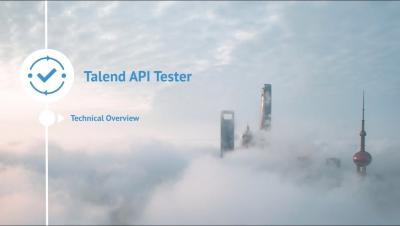Systems | Development | Analytics | API | Testing
Talend
Hit the "Easy" Button with Talend & Databricks to Process Data at Scale in the Cloud
The challenge today for big data is that 85% of on-premises based Big Data projects fail to meet expectations and over 2/3 of Big Data potential is not being realized by organizations. Why is that you ask? Well, simply put on-premises “Big Data” programs are not that easy.
Getting Started with Talend Open Studio: Run and Debug Your Jobs
In the past blogs, we have learned how to install Talend Open Studio, how to build a basic job loading data into Snowflake, and how to use a tMap component to build more complex jobs. In this blog, we will enable you with some helpful debugging techniques and provide additional resources that you can leverage as you continue to learn more about Talend Open Studio.
What the Healthcare Industry Can Teach Companies About Their Data Strategy
The information revolution - which holds the promise of a supercharged economy through the use of advanced analytics, data management technologies, the cloud, and knowledge - is affecting every industry. Digital transformation requires major IT modernization and the ability to shorten time data to insights to make the right business decisions. For companies, it means being able to efficiently process and analyze data from a variety of sources at scale.
Accelerate the Move to Cloud Analytics with Talend, Snowflake and Cognizant
In the last few years, we’ve seen the concept of the “Cloud Data Lake” has gained more traction in the enterprise. When done right, a data lake can provide the agility for Digital Transformation around customer experience by enabling access to historical and real-time data for analytics.
Talend and Red Hat OpenShift Integration: A Primer
One of the aspects I am always fascinated about Talend is its ability to run programs according to multiple job execution methodologies. Today I wanted to write an overview of a new way of executing data integration jobs using Talend and Red Hat OpenShift Platform.
5 Recipes for Not Becoming the Data Turkey of Your Organization
With Thanksgiving around the corner, it's a perfect moment to take a step back and get some recipes to be data savvy within your organization. Fortunately, Talend experts have a recipe for data success that will help you to stay above the fray.
A Serverless Architecture for Big Data
A popular term emerging from the software industry over the last few years is serverless computing, more commonly referred to as just “serverless”. So what does it mean? In its simplest form, a serverless architecture is a computing model where a service provider dynamically manages the allocation of computing resources based on a Service Level Agreement (SLA), provisioning and running resources only for the time needed and without requiring end-user involvement.
Getting Started with Talend Open Studio: Building Your First Job
In the previous blog, we walked through the installation and set-up of Talend Open Studio and briefly demonstrated key features to familiarize you with the Studio interface. In this blog, we will build a simple job to load data from a local file into Snowflake, a cloud data warehouse technology. More specifically, we will build a new job that takes customer data from your local machine and maps it to a target table within Snowflake.




